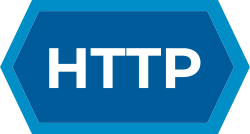| HTTP |
|---|
 |
| Request methods |
| Header fields |
| Response status codes |
| Security access control methods |
| Security vulnerabilities |
This article lists standard and notable non-standard HTTP response status codes. Standardized codes are defined by IETF as documented in Request for Comments (RFC) publications and maintained by the IANA. [1] Other, non-standard values are used by various servers. The descriptive text after the numeric code – the reason phrase– is shown here with typical value, but in practice, can be different or omitted.
Contents
- Standard codes
- 1xx informational response
- 2xx success
- 3xx redirection
- 4xx client error
- 5xx server error
- Nonstandard codes
- Internet Information Services
- nginx
- Cloudflare
- AWS Elastic Load Balancing
- Apache
- Laravel framework
- Spring Framework
- Shopify
- ArcGIS Server
- cPanel
- SSLLabs server testing API
- Pantheon Systems web platform
- Miscellaneous
- See also
- References
- External links
